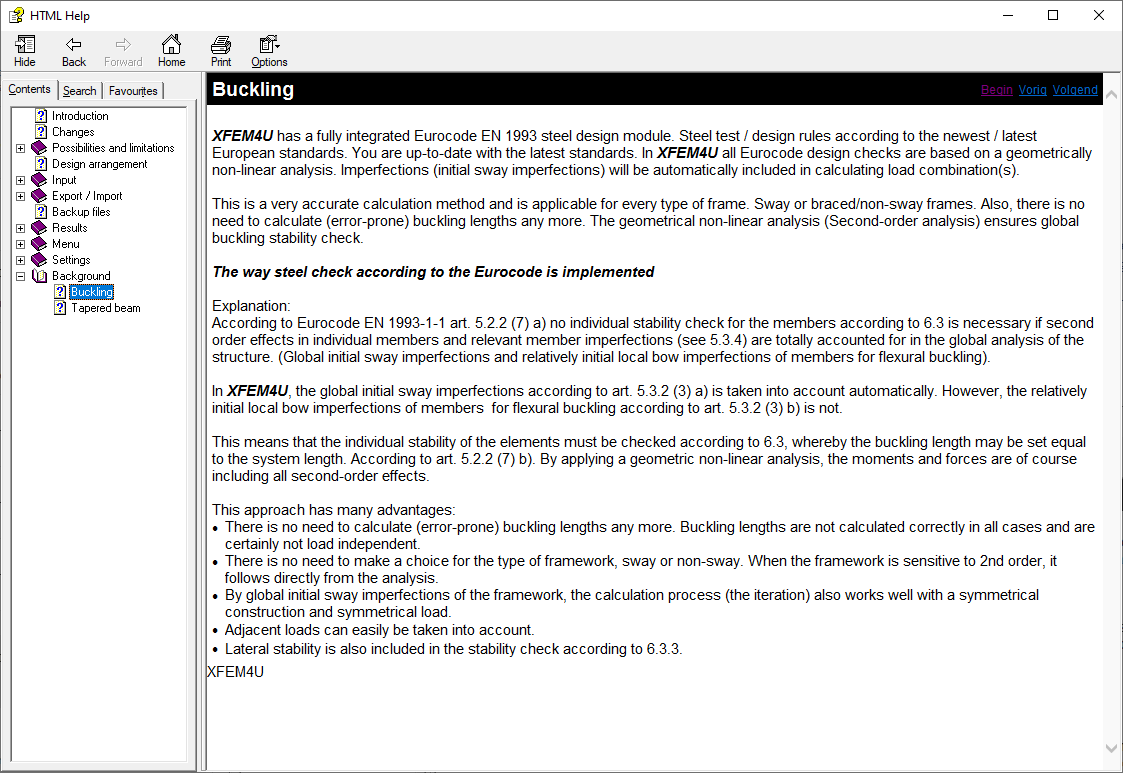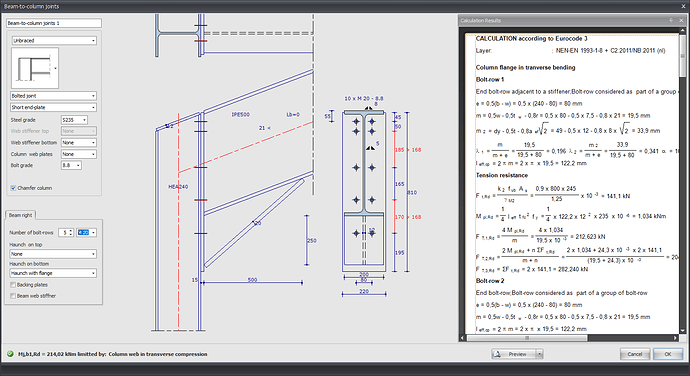Hello there, I have a couple of queries related to XFrame2D:
-
What exactly is meant under geometric non-linear analysis? Is it a full GNA or a linear analysis with initial imperfections?
-
I have noticed that a tapered beams can be used which is great. But do you intend to include a haunch in the design of frames? I know that stiffness of connections is adopted in the analysis but it would be excellent to take into account additional stiffness of a haunch to a beam automatically from connection design. I am aware that a haunch can be substituted by a tapered beam but it is not so accurate and it means additional manual operation.
-
If I have understood correctly, there is no LBA (Linear Bifurcation/Buckling Analysis) to check stability of frames. Do you intend to add stability checks to the program?
-
We need to carry out a standard linear analysis of a frame without imperfections. So I have set up everything as required:
But for some reason, I am still getting results with the initial imperfections in ULS, please see picture below:

Could someone advise please?
OR


